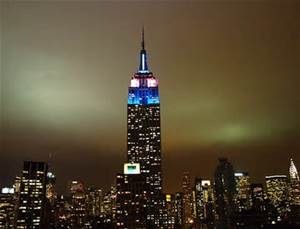New York

-
New York ¨C often called New York City is the center of the New York metropolitan area, the premier gateway for legal immigration to the United States and one of the most populous urban agglomerations in the world. A global power city, New York exerts a significant impact upon commerce, finance, media, art, fashion, research, technology, education, and entertainment. Home to the headquarters of the United Nations, New York is an important center for international diplomacy and has been described as the cultural and financial capital of the world. Many districts and landmarks in New York City have become well known, and the city received a record that 56 million tourists in 2014. Several sources have ranked New York the most photographed city in the world.
Times Square, as "The Crossroads of the World", is the brightly illuminated hub of the Broadway Theater District, one of the world's busiest pedestrian intersections, and a major center of the world's entertainment industry. The names of many of the city's bridges, skyscrapers, and parks are known around the world. Anchored by Wall Street in the Financial District of Lower Manhattan, New York City has been called both the most economically powerful city and the leading financial center of the world, and the city is home to the world's two largest stock exchanges by total market capitalization, the New York Stock Exchange and NASDAQ. Manhattan's real estate market is among the most expensive in the world. Manhattan's Chinatown incorporates the highest concentration of Chinese people in the Western Hemisphere, with multiple signature Chinatowns developing across the city. Providing continuous 24/7 service, the New York City Subway is one of the most extensive metro systems worldwide, with 468 stations in operation. New York City's higher education network comprises over 120 colleges and universities, including Columbia University, New York University, and Rockefeller University, which have been ranked among the top 35 in the world.
1. Metropolitan Museum of Art (The Met)
The Metropolitan Museum of Art (Met), located in New York City, is the largest art museum in the United States and among the most visited art museums in the world. Its permanent collection contains more than two million works, divided among seventeen curatorial departments. The main building, located on the eastern edge of Central Park along Manhattan's Museum Mile, is by area one of the world's largest art galleries.
Represented in the permanent collection are works of art from classical antiquity and Ancient Egypt, paintings and sculptures from nearly all the European masters, and an extensive collection of American and modern art. The Met also maintains extensive holdings of African, Asian, Oceanic, Byzantine, and Islamic art. The museum is also home to encyclopedic collections of musical instruments, costumes and accessories, and antique weapons and armor from around the world. Several notable interiors, ranging from first-century Rome through modern American design, are permanently installed in the Met's galleries.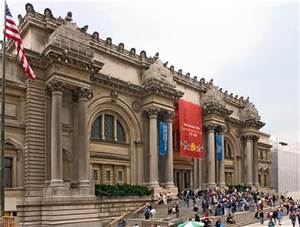
2. Central Park
Central Park is an urban park in the central part of the borough of Manhattan, New York City, it was initially opened in 1857. In 1858, soon-to-be famed national landscapers and architects, Frederick Law Olmsted and Calvert Vaux, won a design competition to improve and expand the park with a plan they titled the "Greensward Plan". Construction began the same year, continued during the American Civil War further south, and was completed in 1873. It was designated a National Historic Landmark in 1962. Today, Central Park is the most visited urban park in the United States as well as one of the most filmed locations in the world.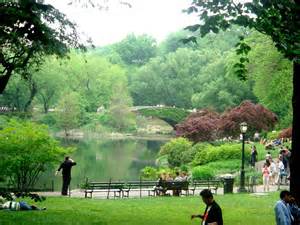
3. Statue of Liberty
The Statue of Liberty is a colossal neoclassical sculpture on Liberty Island in New York Harbor in New York City. The statue is of a robed female figure representing Libertas, the Roman goddess, who bears a torch and a tabula ansata (a tablet evoking the law) upon which is inscribed the date of the American Declaration of Independence, July 4, 1776. A broken chain lies at her feet. The statue is an icon of freedom and of the United States: a welcoming signal to immigrants arriving from abroad.
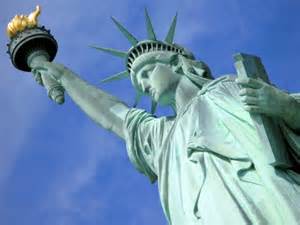
4£® Time Square
Times Square is a major commercial intersection and a neighborhood in Midtown Manhattan, New York City. It is located at the junction of and Seventh Avenue, and stretches from West 42nd to West 47th Streets. Brightly adorned with billboards and advertisements, Times Square is sometimes referred to as "The Crossroads of the World", "The Center of the Universe",] and the heart of "The Great White Way". One of the world's busiest pedestrian intersections, it is also the hub of the Broadway Theater District and a major center of the world's entertainment industry. Times Square is one of the world's most visited tourist attractions, drawing over 39 million visitors annually .Approximately 330,000 people pass through Times Square daily, many of them are tourists.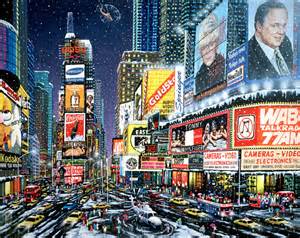
5. Empire State Building
The Empire State Building is a 102-story skyscraper located in Midtown Manhattan, New York City, on Fifth Avenue. It has a roof height of 1,250 feet (380 m), and with its antenna spire included; it stands a total of 1,454 feet (443 m) high. It stood as the world's tallest building for nearly 40 years, from its completion in early 1931 until the topping out of the original World Trade Center's North Tower in late 1970. Following the September 11 attacks in 2001, the Empire State Building was again the tallest building in New York (although it was no longer the tallest in the US or the world), until One World Trade Center reached a greater height on April 30, 2012. The Empire State Building has one of the most popular outdoor observatories in the world, having been visited by over 110 million people. The 86th-floor observation deck offers impressive 360-degree views of the city. The Empire State Building anchors an area of Midtown which features other major Manhattan landmarks as well, including Macy's Herald Square, Koreatown,[82] Penn Station, Madison Square Garden, and the Flower District. Together, these sites contribute to a significant volume of commuter and tourist pedestrian traffic traversing the southern portion of Midtown Manhattan.